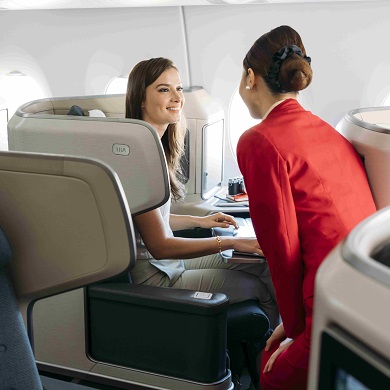
Discover Seoul
with Cathay Pacific
K-pop and K-drama have put South Korea’s capital on the map, but this neon-soaked city merges its neon glam with quiet tradition.
Surrounded by undulating hills and mountains, Seoul is home to Unesco World Heritage Sites, historic tearooms and sprawling temple complexes. Among the many things to do in Seoul is to sample some of Korea’s best street food, and then go exploring the parks and swimming pools which line the Han river – while on the southern bank, the glitz of Gangnam district awaits.








































